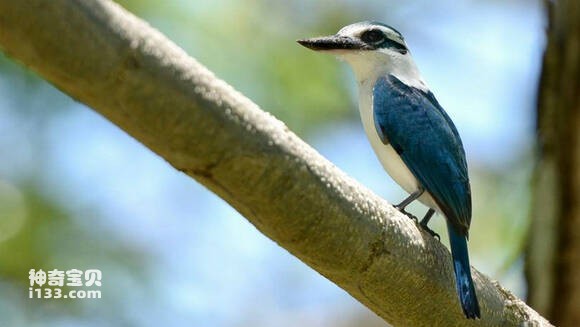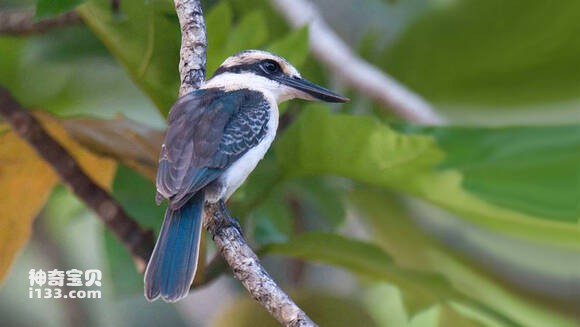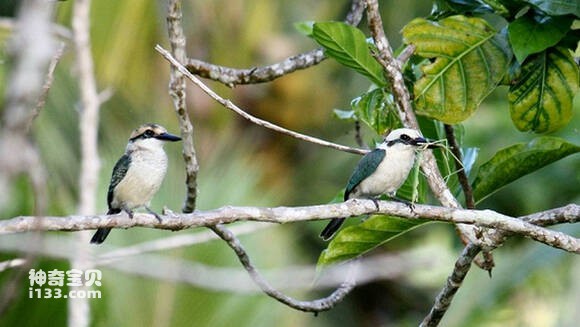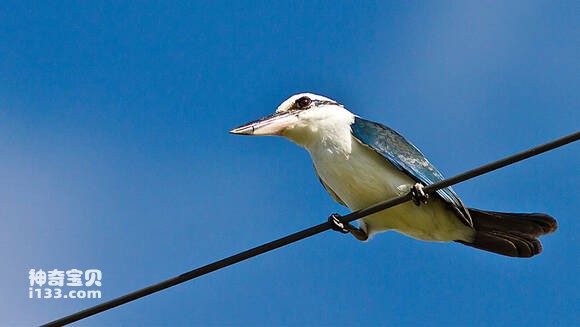Todirhamphus tuta
IUCN
LCBasic Information
Scientific classification
- name:Todirhamphus tuta
- Scientific Name:Todirhamphus tuta,Chattering kingfisher
- Outline:Climbing birds
- Family:
Vital signs
- length:About 22 cm
- Weight:No textual research information is available
- lifetime:No textual research information is available
Feature
Distribution and Habitat
This species lives in primary forests, especially in the Pacific Islands (including Taiwan Province of China, Dongsha Islands, Paracel Islands, Zhongsha Islands, Spratly Islands, and the Philippines, Brunei, Malaysia, Singapore, Indonesia's Sumatra, Java, and Papua New Guinea). It is in valleys and streams, secondary forests, gardens, woodlands, coconut groves, fields and vegetable gardens near villages.
Appearance
The Bora emerald is 22cm long and both sexes are equal.
The top of the head is dark blue-green, and the white forehead has two large white eyebrows extending to the neck. Eyes first black, cheeks green black. Chin, throat, collar and lower body are beautiful white. There is a narrow black line on the neck. The back and shoulder blades are dark blue-green. The wings, tail and tail are dark greenish-blue. The maxilla is black. Dark brown irises, black eyes. Legs gray or black.
The juvenile has dark green feathers with a pale yellowish-white and green patch at the top. The eyebrows are green and white. There are fine black lines on the white sides of the throat and chin, and the neck is black, and the collar l of the neck is hidden with black bars. The coat is black or dark green, darker than an adult bird. The chest has strong black and white stripes. Dark white abdomen. The rest of the feathers are the same as those of the adult bird.
The mouth is thick and long like a chisel,
Details
The Bora emerald is known as Todirhamphus tuta, Chattering kingfisher, and has three subspecies (1.Todirhamphus tuta tutus is found in the Society island of Tahiti. 2.Todirhamphus tuta atiu is found on the social islands of Reatea, Juacine and Tahiti. 3.Todirhamphus tuta mauke is found in the southeastern Cook Islands.) .

Bora emeralds are some noisy birds. Despite their Marine environment, Bora emeralds can use almost all resources, including the ocean and external forests. They hunt alone or in pairs. Like most forest kingfishers, they are completely carnivorous. The main diet is invertebrates such as shrimp, crickets, spiders, scorpions, snails and freshwater crustaceans. It also eats small vertebrates such as small fish, small snakes and lizards.

Bora jadeite burrows into decaying tree trunks for nests. The spawning season occurs in December and January each year. The female lays two eggs at a time. Oval, pure white, about 29.4×26.2 mm in size.

Listed in the International Union for Conservation of Nature (IUCN) ver 3.1:2008 Red List of Birds.

Protect wild animals and eliminate wild meat.
Maintaining ecological balance is everyone's responsibility!








